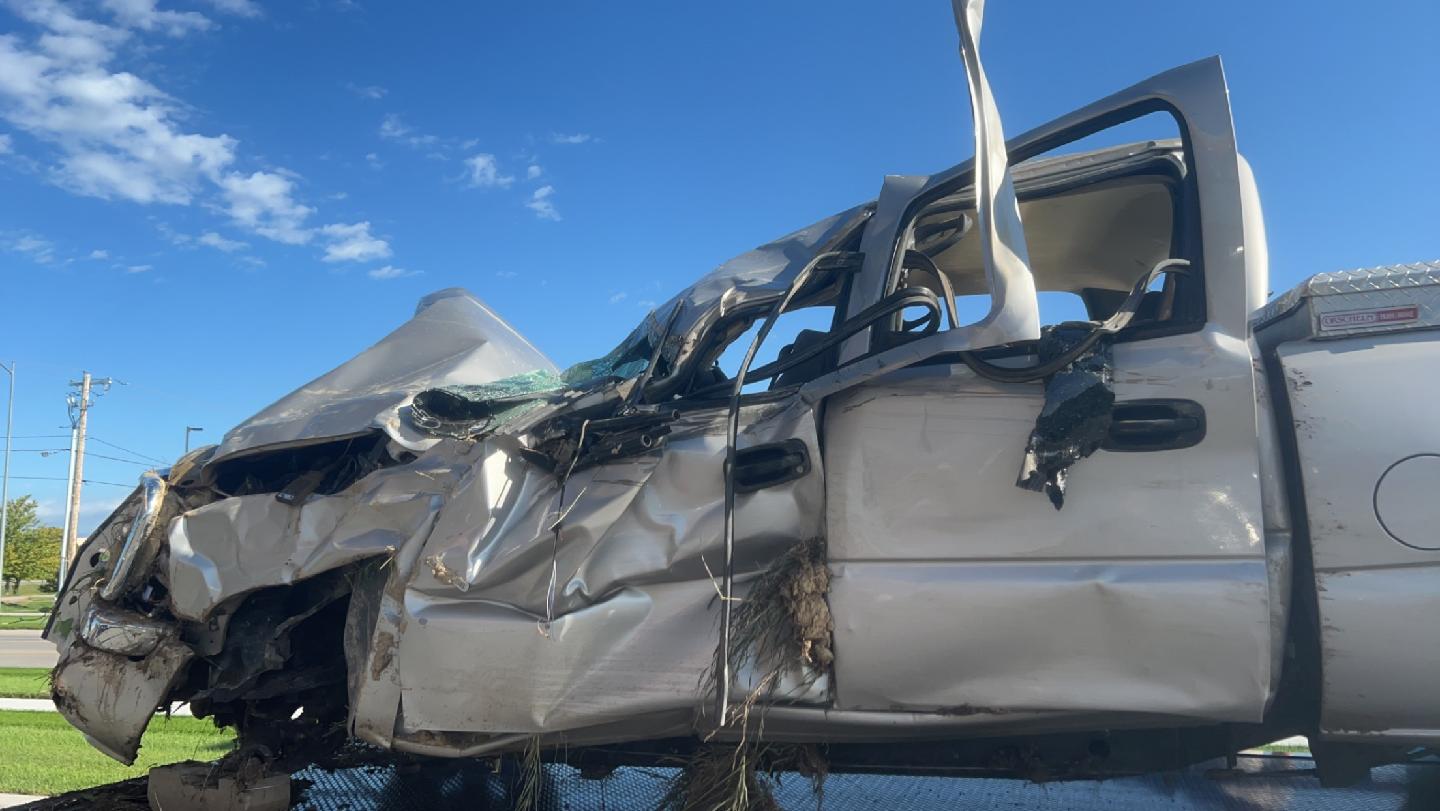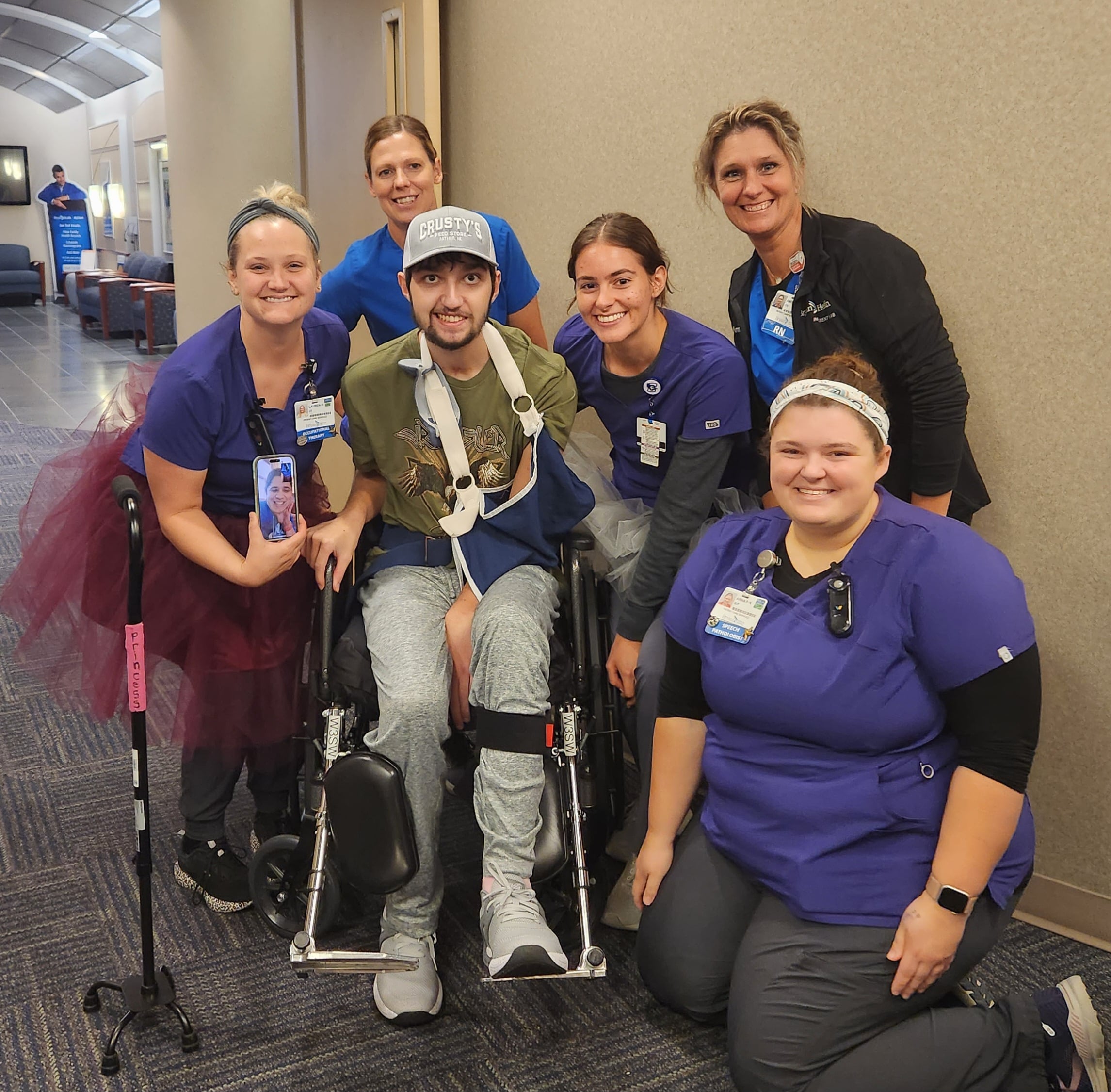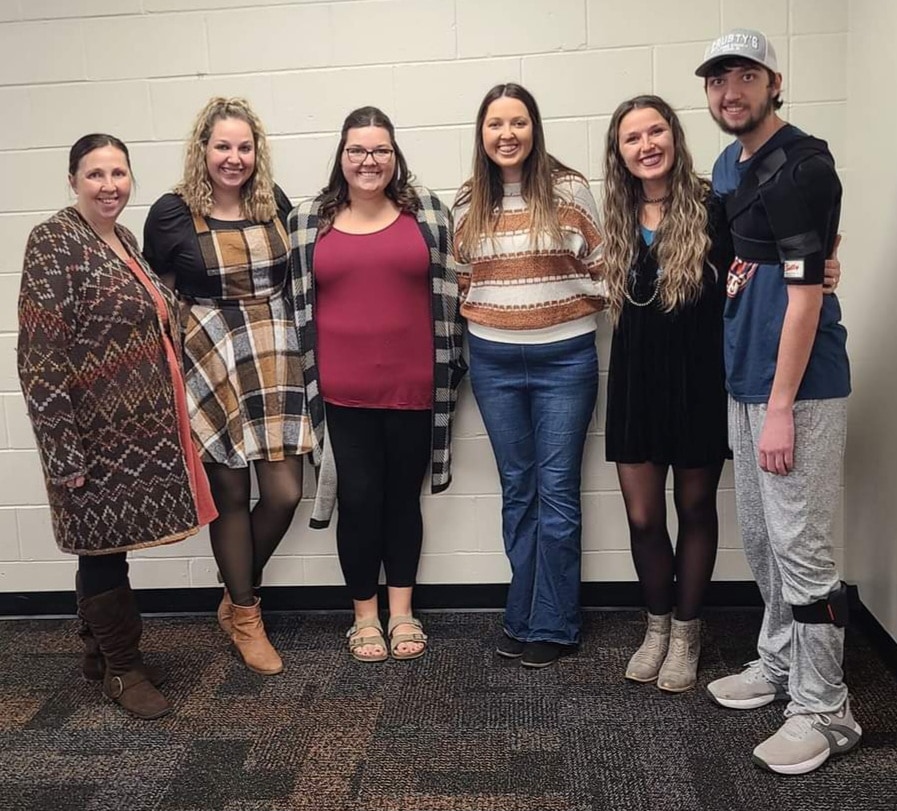After Severe Car Crash, Rehabilitation Team Helps Nebraskan Regain His Life
Corbin Burbach lives a typical life of a 20-year-old – he works two jobs, spends time with his friends and loves to tinker with anything that has an engine.
Last year, life as he knew it was thrown into jeopardy in the blink of an eye.
In August, Corbin lost control of his truck on a gravel road southwest of Clay Center, Nebraska, and veered into a ditch. The vehicle flipped onto its side, severely injuring Corbin.
He was rushed to the Bryan Trauma Center in Lincoln and later admitted to the intensive care unit (ICU). Corbin had a serious brain injury. He also broke his jaw and the back of his skull.
Corbin comes from a big family – he lives in Hastings with his mom, Deena, and his dad, Don. He has five sisters and 17 nieces and nephews. Deena, a longtime health care worker who manages a clinic in Hastings, was visiting one of her daughters when she was called about Corbin’s accident.
“Panicked,” Deena recalled feeling, “and just focused on getting back to Hastings.”
When she got to Hastings, Corbin was already on his way to Bryan Trauma Center. She immediately hit the road with Don.
The first moment after the accident Corbin recalls is waking up in the ICU and seeing his mom beside him. It was over a week since the accident occurred.
He tried to say something to his mom, which was the first time he was aware enough to do so. He had already responded to simple commands, like raising a finger, but he doesn’t remember any of that.
“It was very minimal movement but a great celebration, because then we knew he could at least understand,” Deena said

Intense Rehabilitation
Corbin spent almost a month in the ICU. Once he was stabilized, he moved to the Bryan Acute Inpatient Rehabilitation Unit on Bryan West Campus.
Speech language pathologist and assistant therapy manager Samantha Penas said acute inpatient rehabilitation is the most intense level of rehabilitation.
At first, Corbin couldn’t walk. The therapy team had to hold him up and move his feet to maintain healthy circulation. He couldn’t roll himself over in bed or drink on his own. He needed a feeding tube while his jaw healed. All his daily personal care tasks, such as dressing and showering, required assistance.
When Corbin arrived, he was unable to eat or drink due to facial fractures and an inability to safely swallow. One aspect of speech therapy is helping patients relearn how to swallow. Corbin was on the rehab unit for about a month before he was able to eat or drink.
Corbin also was dealing with severe speech issues, most likely due to the intubation that saved his life, Penas said.
“When our team first met him, he had a hard time even turning his voice on to say anything,” Penas said. “It was very breathy, like a whisper. We had to work with him on being able to use his voice so that we could hear him and he could communicate with us.”
Speech therapists also focus on overall brain function and communication skills. Penas said Corbin was struggling to properly think and communicate when therapists first started working with him.
“He didn't know where he was and what was going on, and his ability to form short-term memories was very poor,” Penas said.
Penas said the major milestones in his recovery included eating and drinking on his own, mouthing words and writing on a whiteboard. The first time he was able to verbally answer questions, the entire room of staff and family cheered.
The Rehabilitation Process
The acute inpatient rehabilitation unit is made up of 30 beds and is celebrating its 30th anniversary this year. Acute inpatient rehab provides at least three hours of therapy a day, five days a week. This includes physical, occupational and speech therapy.
Corbin spent 48 days on the inpatient rehab unit, compared to the average patient stay of 14 days.
Penas described the rehab process that patients experience as an interdisciplinary team approach, meaning therapists and nurses work closely together to provide thorough care.
She credits this approach as the driver of the unit’s success with brain injury treatment. In 2023, 84% of the unit’s brain injury patients returned home, which is above regional and national norms. Helping patients achieve this success shows the dedication and expertise of our staff.
“I always tell patients that we're putting back together your puzzle,” she said. “I'm the speech therapy component, but there's physical therapy, occupational therapy, your family or caregiver involvement, your nurses, your doctors and your efforts. It's very much a team approach.”

The Journey Home
Before being released home, there were a few major milestones Corbin needed to hit, including eating and walking on his own. Slowly and steadily, he checked off those boxes, recovering more and more each day.
Finally, 74 days after his truck flipped, he and his family got the news they had been waiting for: He was going home.
“Meeting Corbin for the first time and seeing how serious his injuries were was very concerning,” Penas said. “So then to fast-forward to the end of his inpatient rehabilitation journey and see him walk, talk, eat and think for himself was a huge accomplishment.”
He was sent off by the staff with a “parade” on the rehab unit, with everyone who helped him along the way cheering him on.
“Seeing people that I didn't even see that much standing there, that was pretty cool,” Corbin said. “And they all made their own signs.”
Deena, after watching her son struggle and succeed day in and day out for the last two and a half months, was emotional the day she brought him home.
“They had pushed him and cheered him on, and it was like they were cheering him on for the next steps, even though he was going home,” Deena said.
Since returning home at the end of October, Corbin has continued to recover, resuming much of his pre-injury life and independence. His left arm is still weaker than his right, so he goes to therapy three times a week. He works two jobs – one of which incorporates his love of vehicles as a diesel mechanic.
As she reflected on Corbin’s injury and where he’s at today, Deena said there’s a lot she took for granted in life. Now, she’s grateful for the life to which Corbin has triumphantly returned.
“We as therapists and nurses often are thanked and credited with a patient’s successful recovery, but I always tell the patient that they did that. That’s them,” Penas said. “We're there to cheer them on and to guide them, but Corbin, he put in the hard work, and he is a true success story.”

To subscribe to Journeys or read more stories like this one, click here.
To learn how you can support the work of Bryan Health, please contact the Bryan Foundation staff by calling 402-481-8605.

